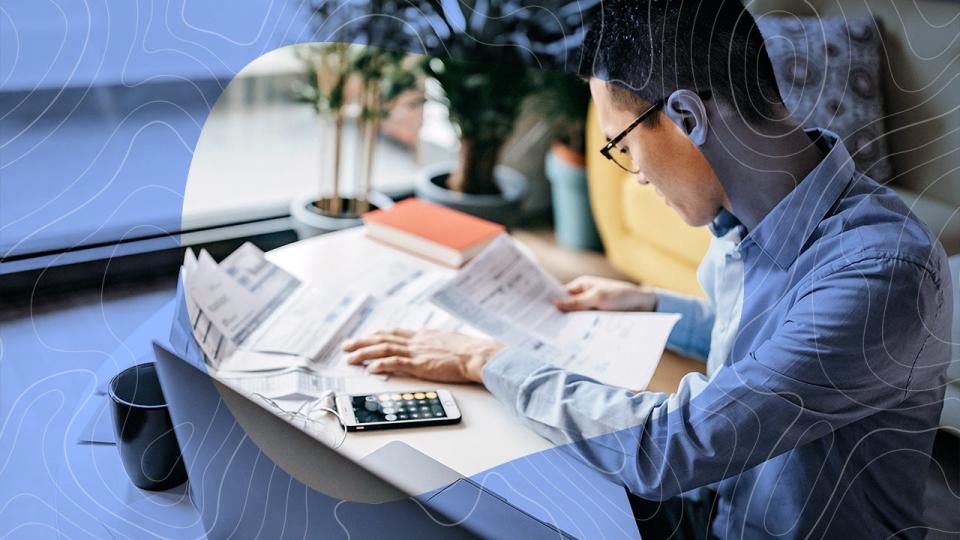These are the 5 biggest consumer fintech trends to watch for in 2023


Fintech is changing the way we bank year by year, be it with digital payments, virtual assistance or socially conscious alternatives to traditional banking.
The term “fintech” stands for financial technology. Broadly, it captures the range of technology used in banking and financial services. It also refers to the firms developing this technology to compete with traditional banks.
Fintech is a big part of life for consumers across the country — as of 2021, 88 percent of Americans will use technology to manage their finances in some way, according to financial services provider Plaid. Furthermore, Adroit Market Research predicts that the global fintech market will reach over $698 billion by 2030.
While tools like digital payments and multi-factor authentication have been around for years, new technology is constantly being developed. Here are some of the latest fintech trends that bring convenience and protection to consumers.
5 fintech trends to watch for in 2023
1. Fintech firms are finding new ways to make finance more environmentally friendly
As environmental issues become more prominent in the wider world, so will new solutions – and fintech companies are often at the forefront of making finance greener.
Large banks have historically fallen short when it comes to the environment. A 2022 study by several nonprofits found that a quarter of all fossil fuel financing came from JPMorgan Chase, Citi, Wells Fargo and Bank of America over the past six years. Smaller challenger banks – a type of fintech that offers digital banking services – offer alternatives to the big banks that put the environment at the forefront of their mission.
For example, Aspiration offers a debit card that earns up to 10 percent cash back on purchases from socially and environmentally responsible businesses. The debit card itself is made of plastic taken from the sea. Although the fintech is not technically a bank, the deposits are held in custodial accounts through partner banks so they are insured by the FDIC.
Meanwhile, Treecard is another fintech that offers an alternative to big banks, and its main mission is reforestation. Customers can sponsor the planting of one tree in two ways: by walking 10,000 steps (tracked through the fintech app) or by spending $50 with the elegant, sustainably sourced, recyclable tree debit card. Treecard also claims to donate 80 percent of its profits to reforestation.
What is the promise: You can knock a place that’s eco-friendly and prioritizes global impact over profit.
What to watch out for: The accounts offered by these fintechs are unlikely to offer all the features that a standard bank account does. They also may not be insured, although many offer FDIC insurance through custodial accounts.
2. Workers want more flexibility with payday, even getting paid daily
Features that allow you to get your paycheck a few days early have become popular in recent years. But some fintechs take it a step further, allowing employees to receive their earned wages almost whenever they want.
For example, Even partners with employers such as Walmart and PayPal to allow their hourly employees to access up to 50 percent of their earned wages, among other things. The idea is to get paid after a shift, rather than waiting for a check to bounce.
Meanwhile, fintech DailyPay allows workers to access money from work pretty much whenever they want. They must enroll in DailyPay through an employer and can then transfer up to $1,000 of earned wages per day to an associated bank account.
What is the promise: In addition to earlier access to paychecks, some employers may work with fintechs to allow workers to receive their earned wages when they want. This can be useful for covering overdrafts, paying bills and avoiding early payday loans.
What to watch out for: If you access your salary earlier, your paycheck will be lower later. Some of the fintech apps also ask for tips. Make sure the default tip setting is set to the amount you want to tip, if you want to tip at all.
3. AI will take on a bigger role in protecting your finances
Artificial intelligence (AI), machine learning, automation – whatever you call it, advanced data-driven technology is completely changing the way banks and consumers approach finance.
A 2020 World Economic Forum report found that 90 percent of fintech firms and 80 percent of traditional banks have implemented AI technology in some way. Specifically, 56 percent of all firms were already using AI for risk management, while 39 percent said they were implementing or planned to implement AI for risk management.
JPMorgan Chase was one of the forerunners to integrate AI into financial protection. The financial company made headlines in fintech with OmniAI – a platform dedicated to developing AI technology to make banking safer and more efficient. One of the ways AI does that is through early fraud detection.
You may not realize it, but AI may already be helping protect your finances by detecting and preventing payment fraud and money laundering. As banks and fintech firms continue to develop artificial intelligence in the financial sector, there will be more security measures for consumers’ bank accounts.
What is the promise: AI technology is becoming more widely adopted as a way to assess risk, detect fraud and prevent money laundering, making both consumers and businesses more financially secure.
What to watch out for: The Consumer Financial Protection Bureau (CFPB) warns that AI technology to detect risk could affect credit decisions. Banks and creditors must be able to give concrete reasons for denying someone credit in order to prevent discrimination.
4. Money management goes into virtual reality
Virtual reality has become a frequent topic of recent discourse, with the likes of Metaverse and Oculus Quest making simulated experiences more advanced and accessible. And now virtual reality is finding a place in fintech too.
Artlabs, a software company that develops virtual and augmented reality for brands, lists some ways virtual reality can be leveraged in fintech:
-
Virtual shopping and payment
-
Data and transaction visualization
-
Improved virtual customer service
-
Biometric authentication – a form of identity verification based on a person’s physical and behavioral characteristics
Bell.One is a technology provider bringing virtual reality into the banking industry. It is developing technology that will allow bank customers to do things like find an ATM nearby simply by holding their mobile phone and scanning their location using the phone’s camera and GPS.
What is the promise: Virtual reality technology takes banking one step further than virtual assistants and automated transactions. You get a much more immersive banking experience without having to leave your home.
What to watch out for: In some cases, virtual reality can make things too accessible. If virtual reality makes it possible to make payments through, say, eye scanning, it may be easier to use more recklessly.
5. The Just Walk Out technology makes it possible to check out without queuing
In 2022, Amazon expanded its Just Walk Out technology to third-party retailers. The technology allows customers to buy goods in a store without going through a payment process. Instead, they simply scan a credit or debit card, a QR code, or even their palm as they enter and exit the store. Items they pick up from the shelf are placed in a virtual shopping cart or removed if they return the item, but nothing is charged until the customer leaves the store.
It may sound like science fiction, but Amazon has already used the technology in its Amazon Go stores using computer vision, sensor fusion and machine learning. Shoppers at Amazon Go stores never have to wait at the checkout. Just Walk Out has also been implemented for places such as Sainsbury’s, TD Garden, WHSmith and others.
What is the promise: More shops are using technology that allows you to shop and pay for goods without having to wait at the till.
What to watch out for: Technology can make certain parts of shopping, such as returning or getting a receipt, more complicated. It may also make some consumers wary of being virtually tracked by technology.
The bottom line
Every year, new technology emerges that changes the norms for banking and finance. Concepts such as an app that allows you to send money to friends or a digital wallet in your mobile phone would have been unheard of decades ago. We often take these developments for granted, but the role they play in our daily activities is crucial.
That said, new technologies, like their manufacturers, are not perfect. It often takes years to fine-tune their abilities. While it makes sense to be a little wary of these innovations, as with any change, it’s worth looking at how they can add ease and security to your finances in the long run.





















![Bitcoin.com pays up to 212% APY on farms [SPONSORED] Bitcoin.com pays up to 212% APY on farms [SPONSORED]](https://www.cryptoproductivity.org/wp-content/uploads/2023/03/Bitcoin.com-Paying-Up-To-212-APY-On-Farms-120x120.png)


